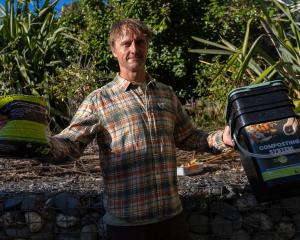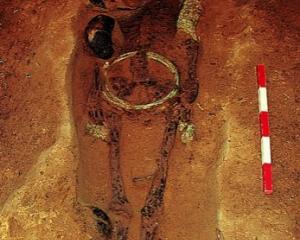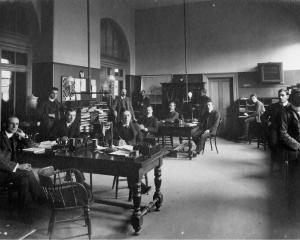Greymouth man Les McKenzie's phone began ringing off the hook as soon as word got around that the 50th anniversary of the road's opening was to be celebrated on November 6 this year.
Since then, Mr McKenzie has been helping collate a virtual landslide of memories, photographs, stories and anecdotes from former road workers and West Coast residents about what is now an important part of New Zealand's most famous scenic route, State Highway 6.
"I think we are going to end up with a surplus, the way we are going," Les McKenzie said in an interview with the Otago Daily Times.
"I've been getting phone calls every day. There's a lot of stuff."
Mr McKenzie (74) recently retired from his job as inspector of works at Opus but still works part-time for the privately-owned roading and infrastructure company, which in former times was the state-owned Ministry of Works.
Mr McKenzie has had a long career in road-building and has had a lot to do with the sealing and resealing of the Haast Pass road, as well as maintenance and construction of other West Coast roads.
From 1953 until 1965, Mr McKenzie worked for the Paringa-based Ministry of Works road survey crew responsible for building the coastal route to Haast from Fox Glacier.
After the Haast road opened in 1960, he transferred to Harihari and later to Greymouth.
One of his key tasks for November's reunion has been documenting nearly every culvert, layby, tourist stop and historic site along the route from Haast village to the pass.
It's been a big job and the keenly awaited results of his labours will be displayed at the celebrations.
One of his key helpers with this task has been Haast farmer John Cowan (63), who recalls a happy childhood at Haast making his own fun and improvising games to suit the available resources.
"There used to be a picnic every year and we raced with a spoon and potato. But we had bacon and egg pie. And we had sack races," Mr Cowan said.
Mr Cowan's father, the late Bernard Cowan, was one of several cartage contractors who worked along the isolated Jackson Bay road.
He owned six trucks, which had been brought down by ship, and Mr Cowan joined the family business in 1964, aged 17.
Other earlier truck owners included Harry Fountain, Ted Buchanan, Athol McGeady and Bill Robertson.
Mr Robertson held transport licences in the 1940s.
"There were no cars. No-one had a car so he [Bill Robertson] would take people around in trucks. Uncle Bill sold to Harry Smith and then Dad, who was farming at Okuru since he was 14, took over," Mr Cowan recalled.
As a cartage contractor, Bernard Cowan worked closely with the road crews building the roads, and he had many stories to tell about the characters he encountered.
Mr Cowan recalled stories about road worker Bill Blair, of Reefton, a person determined not to let the lack of a road turn him from his purpose.
"He drove a D8 [digger] from Paringa up to the [Haast] pass because he had to get it there. At Coal Creek, there is still a gap in the trees where he came down.
"And he didn't come down the cattle track. The only reason why he did that was because the boat couldn't get the D8 down. It is in a book written about this. The dozer would have been shagged by the time it got there," Mr Cowan said.
At Glitter Burn Creek, near Thomas Bluff, road-workers could not clear the road quickly enough and locals pitched in to keep them on track.
"Dad said, be under no illusion there was any free lunch ... It was just tough. All the gravel was spread by hand, right up to the latter stages.
"And they only had three yards [of gravel] on trucks. That's 2.5m at the most. They were only single-axle trucks ... And they had a loader and a digger, an RB10. It took nine buckets to put 2.5m on a truck."
Before the road opened, Bernard Cowan would drive out to Cromwell, often taking other people with him, he recalled.
By this time, the Haast river at the Gates of Haast had a Bailey bridge - it had been shipped into Jackson Bay and transported up to the gorge.
However, the river remained unbridged lower down at Pleasant Flat, so vehicles would have to be winched or towed through the fast-flowing river at this point.
The Pleasant Flat bridge was the last piece to be finished and Bernard Cowan took great pleasure in driving over it the day before the bridge was officially opened by Ivy Farmery (nee Cron).
"The river was in flood and the truck was filled with supplies for the celebrations. Dad said, `I shall spit in this river. This will be the last time I ever drive through you'," Mr Cowan recalled.
Betty Eggeling also drove the road before it was opened.
Mrs Eggeling (89) denies stories she crawled over the unfinished Pleasant Flat bridge on her hands and knees.
But she admits the fear she felt walking across the unplanked structure.
"I got halfway across there and I froze. They had to come and rescue me. But my sister, she just walked it no problem, high across the water. I didn't really get down on my hands and knees," she said.
Mrs Eggeling and her husband, Charlie, frequently travelled the route, but there was only one time they rode the complete route from Haast to Makarora on horses, she said.
"We were going for a holiday to Dunedin. We left our horses at Makarora. That would have been - oh, I would have had two kids by then, maybe the late 1940s. I can't remember the date exactly," Mrs Eggeling said.
She only once drove the family Land Rover through the Haast River, which she did just before the confluence with the Landsborough River rather than at Pleasant Flat.
"I had got over all right. You could see the Land Rover tipping and bobbing. I was on my own, too, that time," she recalled.
Mrs Eggeling also owned an Austin A40, but kept it garaged at Hokitika to use if she flew up the coast with Air Travel (NZ) Ltd between Haast and Hokitika.
This enterprising airline was founded by former Dunedin pilot Bert Mercer and first flew into Haast on December 18, 1934.
It was New Zealand's first licensed and scheduled passenger service and Captain Mercer also brought in airmail, was the air ambulance, did alpine flight tours and carried freight.
The company was later sold to National Airways Corporation (NAC) and then West Coast Airways.
Mrs Eggeling said the road opening was a "great thing" and motor trips became more frequent.
"When Charlie and I were making the camping ground [in 1954], I used to drive the trucks out and pick up the supplies we needed, the timbers and the windows.
Charlie and I would go out together and load up and come back," she recalled.
Culverts for many of the creeks were not built for many years and it took at least three hours to drive the Land Rover over the shingle road to Makarora.
Now the road is fully sealed and bridged and the trip to Makarora takes 90 minutes.
Mrs Eggeling last drove her Nissan out 12 months ago but now relies on family and friends for long trips.
50th anniversary Haast Rd events
FRIDAY NOVEMBER 5
7pm Haast Hall
Registrations - get-together
Welcome Kerry Eggeling
Reminiscences
Book launch (Dave Grantham's book on Brian McCarthy)
Video viewing and photo displays
A supper will be served. Drinks (wine and beer) will be available for sale.
SATURDAY NOVEMBER 6
11am Jackson Bay road
Welcome John Cowan
Westland District Mayor Maureen Pugh to give speech
Re-enactment of cutting of ribbon by Betty Eggeling and Sonny Yates
Lunch and markets at airstrip
Viewing cars
Dinner 6pm at marquee at Haast Airstrip. Cash bar (beer and wine).
SUNDAY NOVEMBER 7
Church service, Okuru, 9.30am
11am Plaque unveiling at Arawhata Bridge for Dan Greaney (1900-1972).
Dan Greaney was the Jackson Bay roadman for many years and sole Jackson Bay resident for seven years. He was known for his concern for the environment. Dan is still fondly remembered in the Haast by some of the old roadmen returning for the celebrations. A memorial plaque for Dan Greaney will be unveiled at the Arawhata bridge. Refreshments to follow at Haast Hall.












